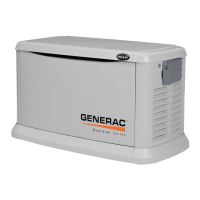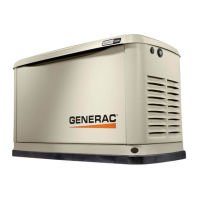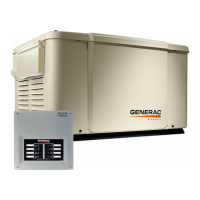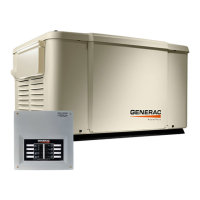15
2. Always inspect the switch for shipping damage. Never mount
a transfer switch that shows any evidence of damage.
3. Protect against impact and mount the switch vertically to a rigid
support structure. Make sure the switch is level and plumb.
Check local codes before wiring the transfer switch. Some
jurisdictions require that wiring inside the switch be done by a
licensed electrician.
4. All wiring must be the correct size and type, and must
conform to all codes, standards and regulations. Refer to the
transfer switch Owner’s Manual and the National Electrical
Code for additional information.
5. As with any product, design changes can occur over time, so
always refer to the schematics in the transfer switch Owner’s
Manual for the required connections and safety precautions.
6. The transfer switch being used is an open transition switch.
Open transition switches prevent electrical feedback between
the generator and the utility by only allowing load circuits to
be connected to one power supply at a time.
SELECTED CIRCUIT COVERAGE
1. The generator powers only designated circuits that are grouped
together and wired into a separate priority distribution panel.
The transfer switch is installed between the main distribution
panel and the priority panel.
The amperage rating of the transfer switch must be equal to
or greater than the highest amperage rating of the utility and
generator breakers feeding the switch.
WHOLE-HOUSE CIRCUIT COVERAGE
1. The generator will be backing up all electrical loads within the
panel, so the amperage rating of the transfer switch must be
equal to or greater than the amperage rating of the normal
utility service.

